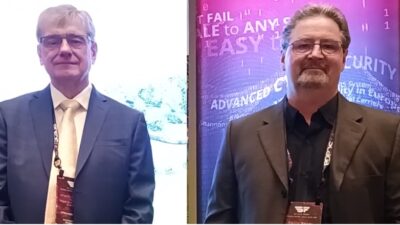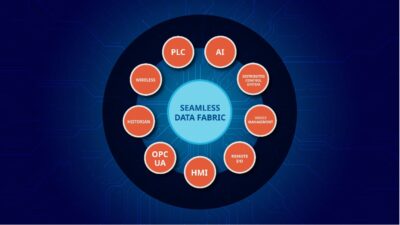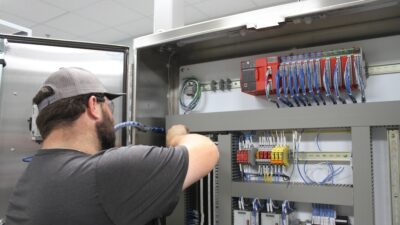A project team looking to reach the end of a project should look for a team member that can serve as a bridge, or a catalyst, between the technical, sales, and management side to ensure that everything goes smoothly.

Every project is different with its own tasks and challenges and every team has unique personalities, work processes, and chemistry. Beyond the core functions of the project team, some opportunities exist for a synergy that propels the capabilities of the group to achieve greater than the baseline scope, schedule, and budget. But that sounds boring…
It’s more entertaining to explore this idea with a fictional case study involving an automation contractor called Renegade Controls. This contractor works on different control systems and is developing a new distributed control system (DCS) platform (a fancy cloud-based control system named "TomorroWare") that is the migration target for a new project.
A typical project team primarily consists of three roles and each side brings a unique perspective:
The sales guy: Butch Cassidy. Think of the sales guy as the leader of a gang of bank robbers. They burst into the room and yell, "I got a PO boys, let’s go!" All joking aside, this is a crucial role for the project. Every team needs a sales guy that can advertise, speak intelligently about the team’s expertise, and navigate the commercial waters to keep everyone getting paid. Technical folks are valuable, but they are often introverts who aren’t necessarily comfortable cold-calling companies to win new business.
The project manager (PM): Chaperon. If the project was a field trip, the PM is the chaperon responsible for keeping everyone on schedule, doing what they’re supposed to be doing. Beyond that, though, the PM is responsible for ensuring the team stays on budget, tracks progress versus the schedule, and provides invoices are among the PM’s responsibilities in addition to ensuring the scope is properly maintained.
The technical guys: The platoon. These workers are on the front lines, fighting for every glorious inch of ground gained through their hard work, experience and problem-solving. Years of control scheme programming make the technical guys the primary export of Renegade Controls.
These three roles form a triangle of the functional project team, and as with any triangle, the whole thing will collapse if any of the sides acts as a weak link. So when Renegade takes on this major migration effort to TomorroWare, they start to hit a snag.
The sales guy brings in the customer, who is impressed with Renegade Controls’ track record of success on similar migrations. The PM seems savvy enough, and presents a comprehensive (albeit generalized) project schedule at the kickoff meeting. When the real work begins, though, an obvious problem appears.
Every programmer is going a different direction and are creating rework and conflicting data on the progress they’ve made. This isn’t an indictment on the technical folks’ abilities or knowledge, but rather speaks to the gap that can exist if they either are missing a grasp of how the project’s big picture aligns or generally just some leadership skills. Another similar hurdle here is if the PM lacks the technical knowledge to the degree needed to lay out a detailed path for newer engineers, or an unfamiliar technology introduces technical hang-ups. Hence, the triangle is in trouble.
Enter the catalyst. Though Renegade may have a sharp and highly experienced project team, this represents a role that could greatly improve the odds of success. The gap the group is facing lies somewhere between the technical group and the PM.
The catalyst brings a type of technical leadership that manifests itself in a few different ways. Like an executive chef at a five-star restaurant who knows the recipes and ingredients for the full menu, the catalyst knows the process from a technical perspective well enough to map out the details of the project activities including the necessary lead times. This particular brand of technical lead is able to carry the knowledge of the scope beyond this project that helps the PM know the inputs needed from the customer or third-parties (and if something being requested cleverly constitutes scope creep).
The catalyst can also go on sales calls to smooth the waters and propose innovative solutions. Their expertise can also greatly benefit quality assurance/quality control (QA/QC) initiatives across multiple, similar projects.
While the leadership among the technical group and PM may be sufficiently well-rounded to carry the project, bringing in a strong technical lead hybrid (or developing that talent from within the organization) can help the group achieve more than the sum of their parts. Leadership—especially with complete technical expertise—is an often overlooked, but crucial, ingredient for success.
This post was written by Josh Bozeman. Josh is a project manager at Maverick Technologies, a leading automation solutions provider offering industrial automation, strategic manufacturing, and enterprise integration services for the process industries. Maverick delivers expertise and consulting in a wide variety of areas including industrial automation controls, distributed control systems, manufacturing execution systems, operational strategy, business process optimization, and more.
Maverick Technologies is a CSIA member as of 9/20/2016.


